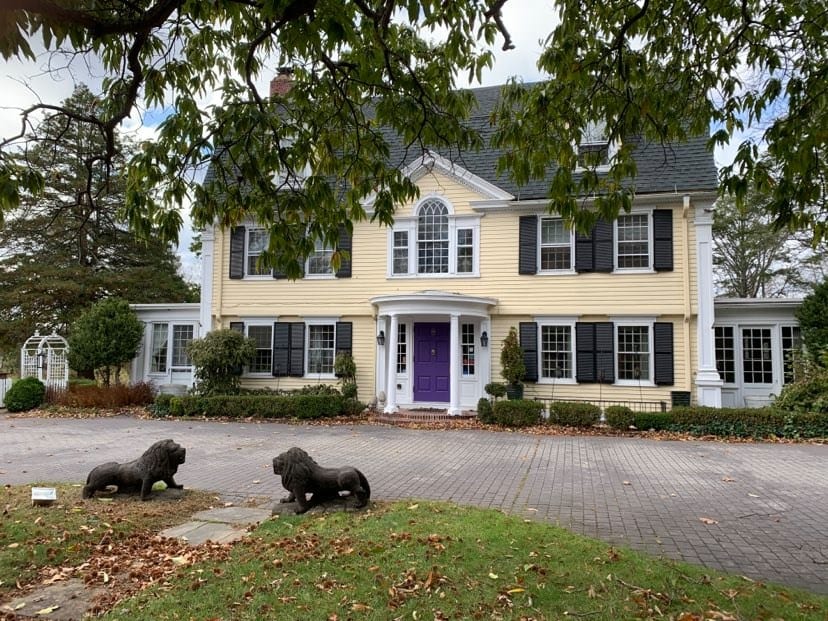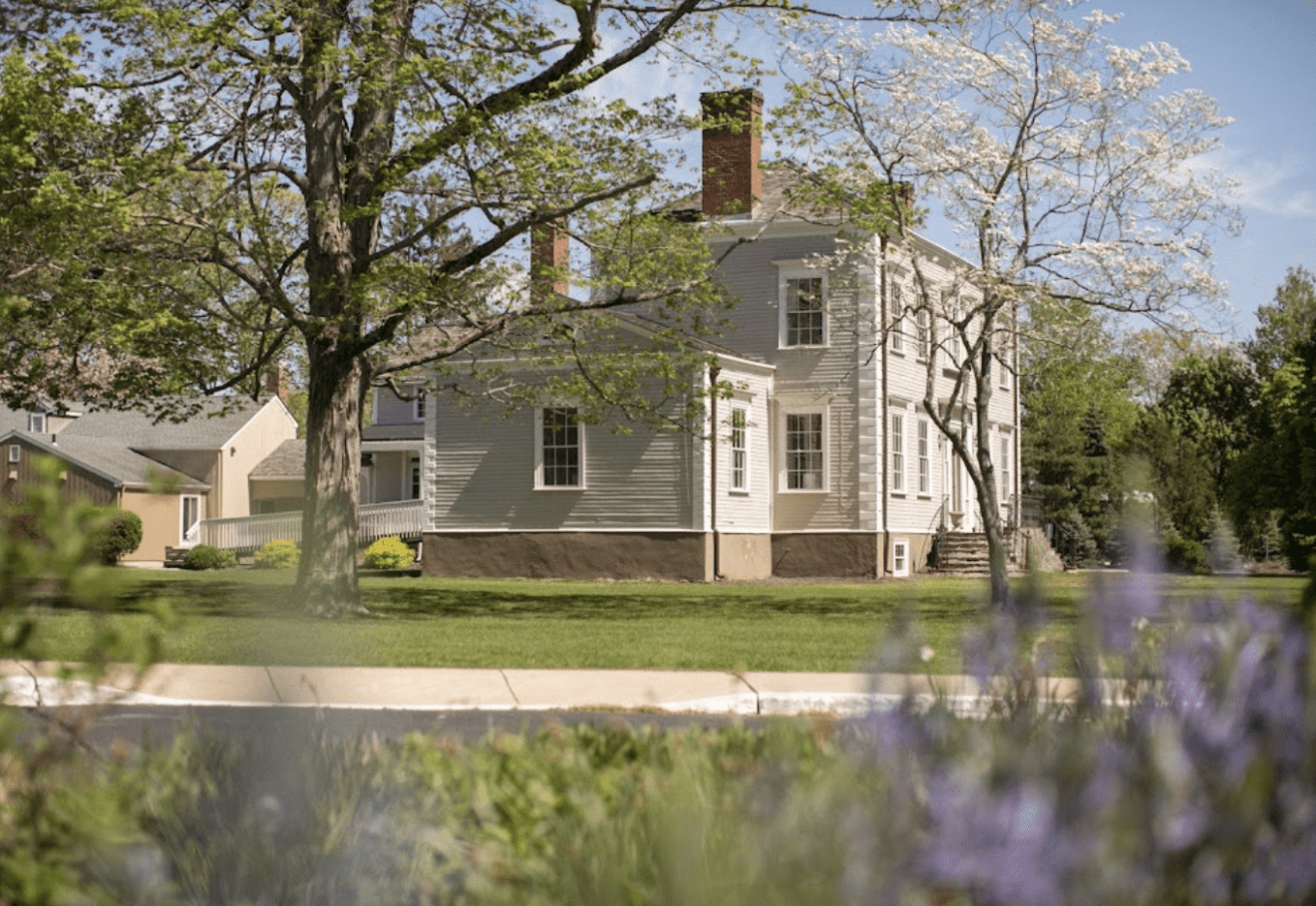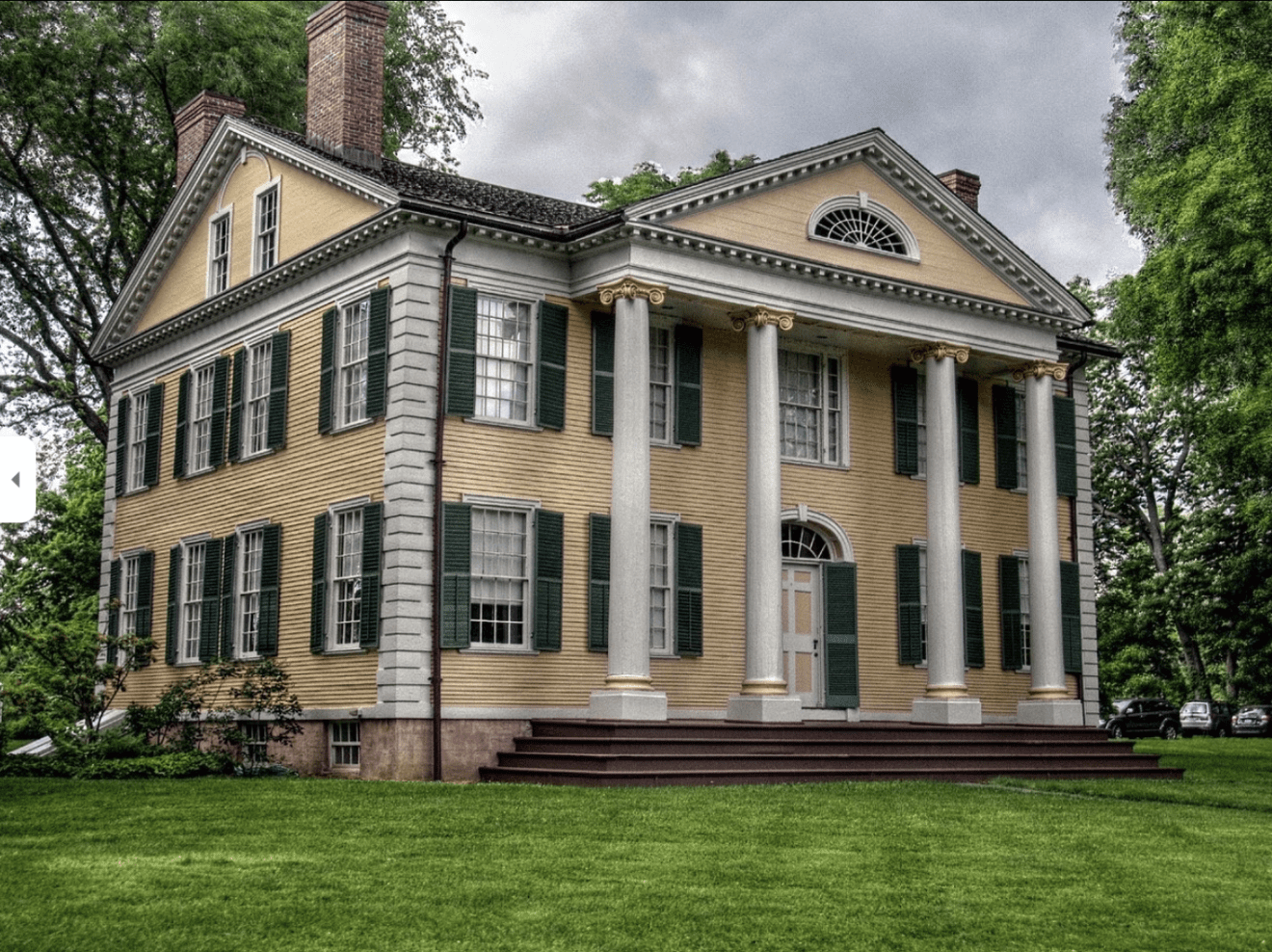OLD LYME — In a surprise announcement, the Florence Griswold Museum and the Lyme Art Association — two of the four nonprofits along Lyme St. that were part of a proposed overlay district — pulled out of the plan late Friday afternoon.
The news was made public at the Historic District Commission meeting Monday morning by Terrance Lomme, the attorney who has represented the four entities in the proposal: Lyme Academy of Fine Arts, Lyme Art Association, Florence Griswold Museum and Roger Tory Peterson Center.
“I got that letter at like 4:30 on Friday,” Lomme told Historic District Commission members, who were set to discuss proposed uses in the overlay, including expanded retail, food and short-term rentals, because the four properties are located in the town’s historic district.
Lomme said that the proposal started with Lyme Academy as the petitioner, rather than the four institutions.
“We sort of have been running the ball here, with the support of the other institutions. As a result of all this, I don’t know what’s going to happen,” he said.
Claudia Weicker, chair of the Board of Directors of the Connecticut Audubon Society’s Roger Tory Peterson Estuary Center, told CT Examiner that news of the withdrawal came as a surprise and, as of Monday, she had not had contact with any board members from the museum or the art association.
“At this point, a cultural overlay district with the two most established cultural institutions now withdrawing is, to me, as I say premature,” she said. “To my knowledge, there was no prior discussion between our organizations at all regarding their decision or the reasons for it.”
She said that the Roger Tory Peterson center was a long way from developing its final plans and that the overlay district would not affect the center’s future plans from moving forward. She said that any uses established under the cultural overlay district will still require going back to the Zoning Commission for various approvals.
“It didn’t preclude any future action or discussion at Zoning, or if there are modifications to the exteriors of the buildings to the Historic District Commission, but I saw it as relevant as not just the head of an institution located in the historic district, but also as residents of the historic district… I view the cultural overlay district as something which would be beneficial to the town and that would establish parameters, what can take place within a certain radius, and establish what the ground rules are, the umbrella under which we all could operate,” she said.

Florence Griswold and Lyme Art Association respond
Elsbeth Dowd, executive director of the Lyme Art Association, who attended the meeting, told the commission that she and Rebekah Beaulieu, executive director of the Florence Griswold Museum, were “completely supportive of our sister institutions’ work,” but had decided to withdraw after discussions with their respective boards about the proposed regulations.
“We think that it’s to our best benefit not to be petitioners or to be a part of the overlay district although we offer full support to the Roger Tory Peterson and Lyme Academy of Fine Arts for their work,” Dowd told the commission.
In an email to CT Examiner, Beaulieu said that along with Lyme Art Association, the museum “elected to clarify our position as supporters, which we have been since first approached regarding a potential cultural overlay district.”
“The Florence Griswold Museum and the Lyme Art Association remain committed allies to our peers at the Lyme Academy of Fine Arts and the Roger Tory Peterson Estuary Center in their petition. We aim to support current and future mission-oriented non-profit organizations in our shared goal to build sustainable operating models while serving the Old Lyme community,” Beaulieu wrote.
When asked why the two organizations decided to withdraw, Dowd replied:
“We recognize that we have benefited from strong partnerships with Town agencies for some time, and are already able to fulfill our missions, engage the community, and sustain operations in the spirit of the proposal.”

Rezoning under the Town’s Plan of Conservation and Development
With the withdrawal of the Florence Grisworld Museum and the Lyme Art Association, the overlay district would include two non-contiguous properties, raising the question of impermissible spot zoning.
Spot zoning is the rezoning of a small property within a larger zone that is inconsistent with a town’s overall plan, known in Connecticut as the Plan of Conservation and Development. For example, spot zoning would allow a small parcel in a larger residential zone to be rezoned as commercial and for a gas station to be built there even though it was inconsistent with town’s overall plan.
But, small parcels of land can be rezoned for specific uses provided that the uses are consistent with the Plan of Conservation and Development, according to a zoning attorney who asked to remain anonymous.
“You can absolutely take a single property and rezone it to something else provided that your rezoning is consistent with the Plan of Conservation and Development,” the attorney said. “If you go back, there hasn’t been a case of spot zoning found by a court in Connecticut in quite some time, like literally decades. Typically Plans of Conservation Developments are followed and nobody’s crazy enough to try to rezone something that’s inconsistent with the POCD.”
Avoiding unintended consequences
Lomme explained that the overlay district would expand certain uses, like short-term housing, but also provide limits, in this case by not allowing full kitchens.
But Russell Todd, a member of the town’s the Historic District Commission, said he worried about unintended consequences, like the construction of an affordable housing complex on the open land across from the Lyme Academy, and asked how the overlay district would prevent such a project.
Lomme responded that the overlay district will allow the nonprofit institutions to operate and to flourish, which protects them from needing to sell land to developers of 8-30g projects.
“There’s no way to prevent that. We can’t say, ‘You can’t do that here,’ but the best way to prevent is to have a good strong organization,” said Lomme.
Commission Co-chair Dini Mallory asked how the proposal would affect what could or could not be constructed, including restaurants.
Lomme said the regulations allow one “cafe or bistro” on each campus, but only if one currently exists.
But commission members said the language was confusing in places and that definitions of “recreational,” “ecological” and “historic” needed to be clarified so that future uses would be limited.

“Not a big glitch”
Mora Rowe, executive director of the Lyme Academy of Fine Arts, told CT Examiner that the withdrawal of the two organizations was not a big glitch.
“I don’t think it’s necessarily that they’re stepping out… I thought that the letters from both Becky and Elsbeth were very similar to how we had gotten started, which is they’re in full support, but don’t necessarily want to be a petitioner,” she said.
Rowe said that when Lyme Academy was putting forth the proposal and reaching out to the other three organizations, Roger Tory Peterson was already meeting with the Zoning Commission with very similar requests for additional uses, including a cafe and rooms where visiting scientists could stay.
“[They] were so much like us… and we thought, we’re trying to do the same thing, so why don’t we see if there’s something that we could do together?” she said. “And we haven’t had yet time to actually figure out what the process is going to be moving forward – whether we changed the language, whether there are things that they don’t like about the language, why they may or may not want to be a partner in the petition, so none of that’s known yet.”
Rowe said she understood the hesitation of the commission members concerning the future uses of the properties.
“I think that what we want would be in line culturally with the Town of Old Lyme … and so everything that we want to do aligns with that vision. But, if we were to rent a space to another organization that maybe saw things differently, that their values didn’t align necessarily – what would that look like?” She said. “I think that what I was hearing from the [commission] today was that the hesitation isn’t necessarily that any of us would do anything to damage the culture and the feel of Old Lyme, but if the overlay district [were approved], what would be the impact for the future if it wasn’t our organizations running things?”
The idea of presenting one proposal for the four nonprofits, considering their similar needs for specific uses, had been the suggestion of former Zoning Enforcement Officer and Land Use Coordinator Dan Bourret, she said.
The discussion of the overlay district on the Zoning Commission agenda tonight will be postponed, according to Rowe.
“We’ll probably reschedule and have a group meeting and then see how to proceed forward,” she said.
—
Editor’s note: A statement made by Russell Todd, at a historic district commission meeting, regarding housing was wrongly attributed to John Noyes. This story has been corrected.

